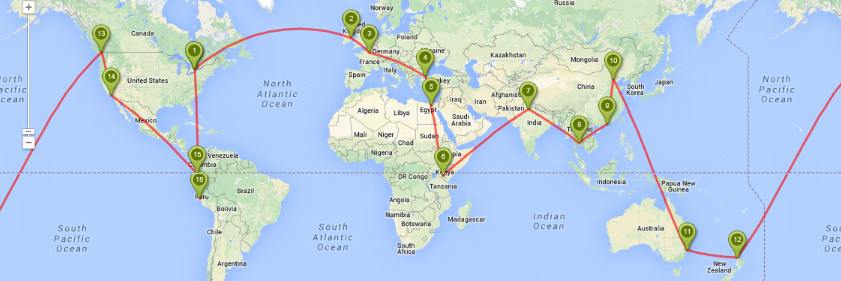The lotus is an aquatic perennial that can be found throughout Asia. The seeds of the flower can last a long time – in some cases over 1000 years!

We have seen this exquisite flower throughout our Asian explorations . The beautiful bloom is said to represent elegance, beauty, perfection, purity and grace and is often used in Asian poetry and music.
Throughout Siem Reap, there are hundreds of hectares of lotus fields. The flowers are used for a number of purposes, including flower selling, but especially for the wonderful industry of creating lotus silk.
Cambodia is the only place in the world where they farm the flowers and use it for fair trade textile industry. The material is simply gorgeous! Natural dyes are used to colour it and the texture is smooth and soft.
 The first step is for the lotus farmers to go out 4 times a day with their boats and pull up the most mature flowers. They are then brought back to the factory where they are soaked in water to soften the stems.
The first step is for the lotus farmers to go out 4 times a day with their boats and pull up the most mature flowers. They are then brought back to the factory where they are soaked in water to soften the stems.

Once the stems are ready, they are cleaned of the small prickles and moved onto the next station. It is here the ladies start to pull the fibres from the stems and twist them in a fast and precise motion. The fibres are incredibly soft to touch.

Then the twisted lotus fibres are passed through the spinning wheel to make lotus thread.
Once the thread is made, the ladies put it onto their looms and work their magic. The material is similar to the weight of raw silk.
(The process reminded me a lot about the silk production we saw at the Silk Village in Vietnam after the cocoons of the silk worm had been spun.)
None of the lotus plant is wasted. The seeds are used for eating as well as jewelry making. The rest of the stems are used for eating as well as to create lip balms, moisturizers and even incense to name a few.
There is one store in Siem Reap – Samatoa that sells the lotus products; all of the products are very high end. One hat cost $500 and a shawl cost $600. Nevertheless, they are unique, one of a kind products that support fair trade and are entirely eco-friendly. The purchase of one shawl will keep the silk workers employed for one year. I’m actually surprised that a business like this has not been spread throughout all of Asia.
Personally, I would have loved to purchase some of the lotus silk – but the price was most definitely out of our daily budget. When we get home and start earning some more income…then I’ll go and shop online at their store! Shhh don’t tell Oliver!












Comments
9 responses to “Asia’s Beautiful Flower”
Hi, Katina, I read your posting first thing this morning, and learned something completely new and beautiful. I always thought that the Lotus flower grows in water. Amazing how they use the stems to make fabrics. Love the photos and the step by step description of the process. I can see that the items are pricey when one considers the work that goes into them. Thanks for bringing all the specialities to us through this blog. Lots of Hugs
Hi Oma,
The lotus does grow in water – but the long grass makes it look as if it’s growing in the ground. The farmers go in their boats through the grass and pull up the most mature flowers to be used for the silk making process. As for the prices – the procedure is indeed labour intensive, so it’s nice to see it’s fair trade and the workers are getting a fair wage for their handiwork. When we were there – it was incredibly hot and working with the plants was very hard work for the ladies….they were incredible!
Cheers,
Kat:)
I was thinking that you have seen a lot of silk production during your trip, in Turkey, Viet Nam and now Cambodia. It is interesting that a silk material can be made from the cocoons of insects and the stems of flowers. I continue to vicariously enjoy a tour of the world from the adventures of you, Oliver and the girls. All the best to you!
Joe
Hi Joe,
We have been amazed with silk production and how these countries make it such a big part of their work force. It has been very interesting indeed.
THe girls are now trying to think of ways we can add silk making to our castle project!
Cheers,
Kat:)
Hi Kat,
Thanks for sharing! That was most interesting! Is is possible to grow the lotus flowers here in Canada? Perhaps, around Pele Island? Love, Mom
Hi Mom,
We found out how to grow lotus flowers…so we can do it at home…just takes a lot of work.
http://m.wikihow.com/Grow-Lotus-Flower
Did you want to join our project group? We’re now growing silkworms, pearls and lotus flowers!
Cheers,
Kat:)
I would love to join thie group!!!
Another fascinating lesson. Thank you. And I agree about the price….yikes! While the shawl or hat would probably last forever, I would probably want a new one….the various silk/ fabric productions are most interesting.
Hi Herta,
Interesting indeed – we have learned so many new things…we can’t keep up!
Although the price is high, I’m happy to see the women getting a fair wage for their work…they deserve it!
K:)